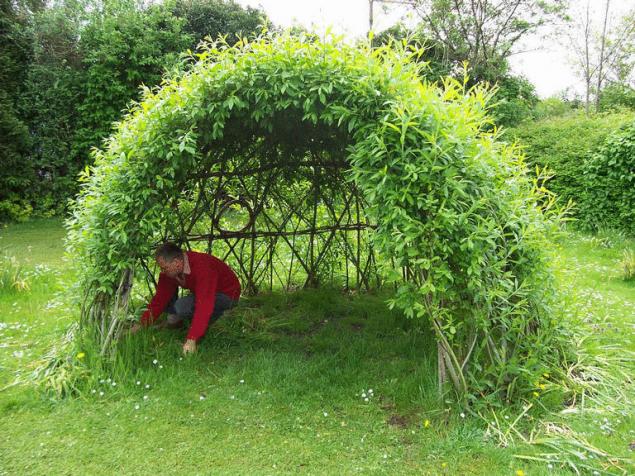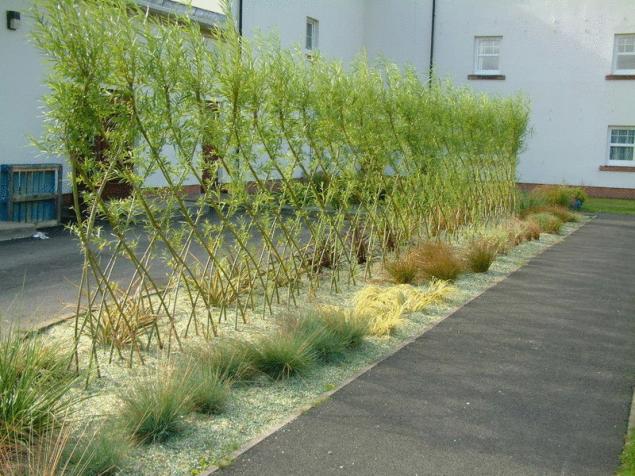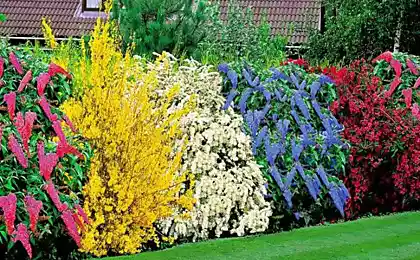631
Construction of the fence from growing willow

As a living fence looks good willow, Norway maple, which all used to be called willow or krasnotal. In addition, gardeners often grow willow trentacinque (belocal), pentandra (carnatal), prutovidnyi, purple and dewy. These types are valued for high frost resistance, resistance to waterlogging of the soil, fast growth (except cerdotola), durability and ruggedness. A hedge of willows are easily cut, giving it the desired shape, or can be left unshaped.
Brief instructions on how to make a hedge of willows,
one of the ways:
— Pull the cord, noting the outline of the future of the hedge;
Every half a meter thick hammer the pins, connecting them to the transverse poles so you can tie the shoots to the poles;
— Cut a strong willow cuttings (or take already sprouted with roots) and plant along the line marking the distance between cuttings 20 cm;
— Firmly tie the upper ends of the shoots to the transverse poles with twine.
— Willow rooted cuttings are usually 100% without requiring feeding and special care. All you need to do pruning in the autumn shoots and twisting them together to the fence was more durable.

If the idea of hedges you like and want to continue to experiment, then here are a few plants that deserve special attention: hedges of flowering shrubs – spirea and lilac. May they bloom only in early summer, but if you plant varieties with different flowering periods, you'll be able to enjoy the fragrance and beauty of lush flowering bushes. A hedge of lilac or spirea will become a true decoration of the street.
These undemanding plants like willow, lilac, spirea. A hedge of willows just a couple of years turns into a dense green wall through the green fence impossible to climb, so it will be tight.
And cut from adult plants, the cuttings are quite suitable for reproduction, so spend money on seedlings do not have and can be readily shared with other gardeners for planting and lessons learned. published

Source: vk.com/pervorod























